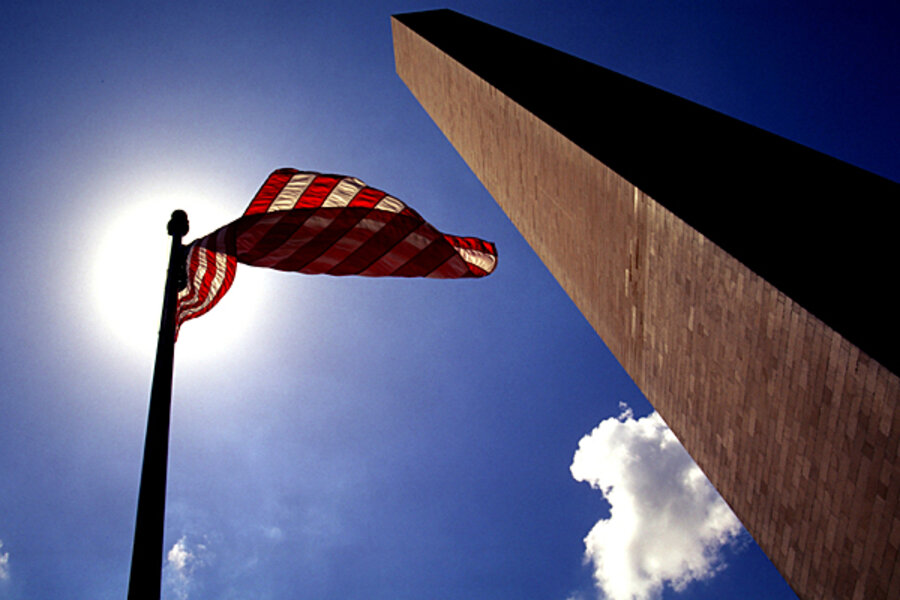Flag Day: What are the rules for displaying an American flag?
Loading...
| Washington
Across the country today, Americans will be waving the Star Spangled Banner to celebrate Flag Day.
Although it is not a national holiday, Flag Day celebrates the day that the American flag was officially adopted by the Continental Congress in 1777. The resolution passed stated that the flag of the United States be made of 13 stripes, seven red alternating with six white, and that the union be 13 stars, white in a blue field, representing a new constellation.
Centuries later, the American flag's blue union has evolved to accommodate all 50 states, but the rest of the original design has been maintained.
IN PICTURES: Celebrating the American flag
The designer of the first American flag is still unknown, although historians believe it was either New Jersey Congressman Francis Hopkinson or Betsy Ross, a Philadelphia seamstress.
The colors of the American flag are symbolic: Red symbolizes hardiness and valor, white symbolizes purity and innocence, and blue represents vigilance, perseverance, and justice.
The idea of celebrating the adoption of the American flag came around in the late 1800s, when Wisconsin school teacher B.J. Cigrand organized a “Flag Birthday” or “Flag Day” for his students.
The celebration became more widespread with each year, leading to the first national observance of Flag Day on June 14, 1877, the centennial of the original flag resolution.
But it was not until Aug. 3, 1949, that President Truman signed an Act of Congress designating June 14 of each year as National Flag Day.
Here are some excepts about flag protocol and decorum from the US Flag Code, passed in 1942:
- Only presidents and governors can order flags on government buildings to be flown at half staff.
- The flag should be flown at half staff for 30 days after the death of a current or former president and for 10 days after the death of a current or former vice president or chief justice of the Supreme Court.
- The flag, when it is in such condition that it is no longer a fitting emblem for display, should be destroyed in a dignified way, preferably by burning.
- The flag should never be used as wearing apparel, bedding, or drapery.
- The flag represents a living country and is itself considered a living thing.
- Anyone may have the flag draped across their coffin. The deceased does not have to be a veteran.





